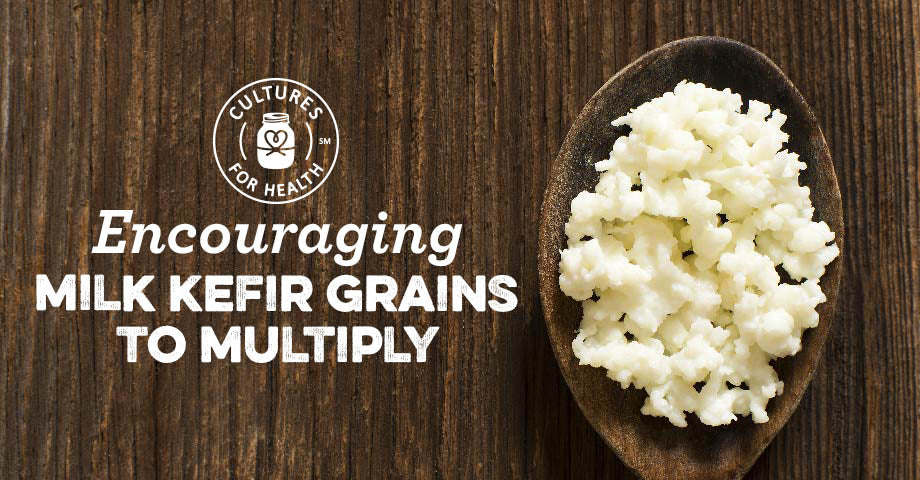
If you are trying to get your milk kefir grains will grow and multiply, there are a few things you can do to encourage their growth.
Keep in mind that milk kefir grains are living things. Giving them everything they need while protecting them from stress is a must. The more grains you have, the more milk you will need to culture every day.
Click to download our free Milk Kefir Guide and Recipe book that will teach you everything you need to know about making milk kefir at home. From how to get started, to tips for keeping your grains happy and healthy, we have got you covered!
5 WAYS TO ENCOURAGE MILK KEFIR GRAINS TO MULTIPLY
1. Give Them an Optimal Temperature
Starter cultures thrive in a consistent temperature.
Too cold and they are sluggish and slow to culture; too warm and they are very active and culture quickly (which often times leads to curds and whey). Both extremes can put stress on the grains.
One of the best ways to avoid strain on milk kefir grains is by keeping the culturing temperature within 68°- 85°F. Avoid drafts and keep them away from direct sunlight when culturing.
If your home is too warm, you can find several solutions in our article, Warm Weather Care for Starter Cultures. If your home is too cool, check out our article, Cold Weather Care for Starter Cultures. These articles offer ideas to keep your milk kefir grains happy.
2. Feed Them What They Need
Milk kefir grains need nourishment and will thrive on either goat or cow milk, raw or pasteurized. We recommend avoiding ultra-pasteurized milk.
Milk kefir grains can be used to culture coconut milk, but it can be hard on the grains if not done properly. Wait to culture coconut milk until your grains are fully active and culturing well. Be sure to alternate batches of coconut milk with dairy milk. If your grains are struggling, try several back-to-back batches in dairy milk.
3. Feed Them Frequently
As kefir grains turn milk into kefir they are consuming the lactose in the milk. After a period of time, they may run out of food. If the grains do not receive new food (fresh milk), they can become stressed, and eventually they may starve and die.
Giving them a consistent food supply by separating the grains and feeding them every 24 hours, or more frequently if indicated, is crucial to keeping your grains healthy.
4. Keep the Grains Smaller
Just as the grains need the proper food, they also need to be able to take in the nutrients in the food.
When you first receive your milk kefir grains they are very small. As they rehydrate and gain vigor they may grow in size and in number.
If you find that your kefir grains are getting larger but are not multiplying, very gently break them apart by rubbing them between clean fingers.
Culturing with smaller grains increases the surface area exposed to the milk, which increases their ability to take in nourishment from the milk. More nourishment encourages the grains to multiply.
5. Agitate the Grains
Sometimes the grains can stagnate either at the top or the bottom of the culturing jar.
Giving the jar a gentle shake every now and again through the culturing process will allow the grains access to the milk in other areas of the jar.
Fresh milk means more food for the grains to feast on, which makes them happy and may encourage them to multiply.
Want to start making your Milk Kefir at home? Download our free Milk Kefir Guide and Recipe Book today!
WHAT IF MY GRAINS WON'T MULTIPLY?
Although milk kefir grains often multiply, we can’t necessarily guarantee that they will. Whether they grow ultimately depends on the vitality of the grains and their culturing environment.
Even if they don’t, they are still perfectly viable for culturing. Remember, they are powerful little critters and will continue to make delicious milk kefir despite their size.
















